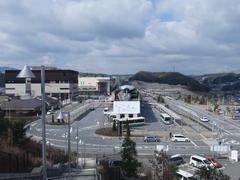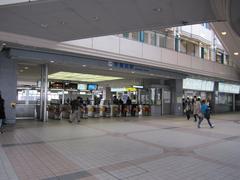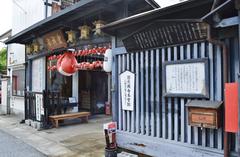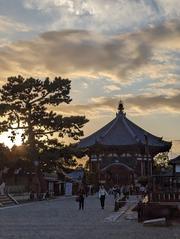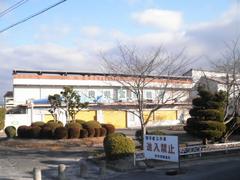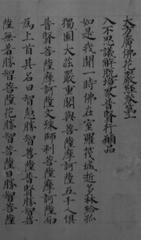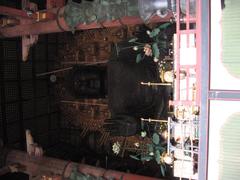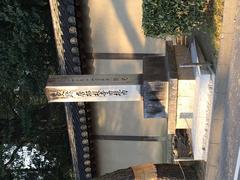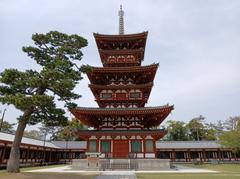Enjō-Ji Temple Visitor Guide: Hours, Tickets, History & Travel Tips for Nara, Japan
Date: 04/07/2025
Introduction
Enjō-Ji (円成寺) is a tranquil Shingon Buddhist temple nestled in the northern hills of Nara, Japan. Founded in 756 CE during the Nara period by the monk Jitchū, a disciple of Gyōki, Enjō-Ji has flourished for over a millennium as a center of esoteric Buddhist practice and cultural artistry. While less frequented than Nara’s more famous temples, Enjō-Ji’s Kamakura-period architecture, National Treasure statues, and serene Muromachi-period gardens offer a peaceful retreat and a unique window into Japan’s religious heritage. This detailed guide covers Enjō-Ji’s history, key attractions, visiting hours, ticket information, access, and travel tips to help you make the most of your visit (Facts and Details; Japan Welcomes You).
Contents
- Origins and Historical Overview
- Architectural and Artistic Highlights
- Gardens and Natural Features
- Visiting Information (Hours, Tickets, Access)
- Facilities, Accessibility, and Etiquette
- Seasonal Events and Festivals
- Frequently Asked Questions (FAQ)
- Nearby Attractions and Suggested Itineraries
- Summary and Recommendations
- Sources and Further Reading
Origins and Historical Overview
Founded in 756 CE, Enjō-Ji was established as a Shingon Buddhist temple for esoteric practice, spiritual protection, and education. The temple received early imperial patronage during the Nara period, which facilitated its growth and influence. Through the Heian, Kamakura, and Muromachi eras, Enjō-Ji adapted to changing religious and political climates, surviving periods of conflict, reconstruction, and cultural flourishing. Key features such as the irimoya-zukuri main hall and the Dainichi Nyorai statue date from the Kamakura period, while the renowned gardens reflect Muromachi-period design principles (Facts and Details; Japan Welcomes You).
During the Edo period, the temple focused on religious ceremonies and preservation of its treasures. Although the Meiji Restoration’s separation of Shinto and Buddhism (shinbutsu bunri) affected many temples, Enjō-Ji endured and is now designated as an Important Cultural Property.
Architectural and Artistic Highlights
Main Hall (Hondō)
The main hall, reconstructed in the Kamakura period, exemplifies medieval Japanese temple architecture with its hip-and-gable (irimoya) roof and robust wooden pillars. It houses the principal icon, a National Treasure statue of Dainichi Nyorai (the Cosmic Buddha), renowned for its serene expression and intricate carving (Japan Guide).
Dainichi Nyorai Statue
This Kamakura-period wooden statue stands approximately 2.5 meters tall and is a masterpiece of Buddhist art. Its presence is central to Enjō-Ji’s spiritual and cultural identity (Nara National Museum).
Tahōtō Pagoda
The two-storied Tahōtō pagoda, dating to 1321, is one of Japan’s oldest surviving examples of this architectural type. Its unique combination of square and cylindrical forms is a visual highlight, especially during the cherry blossom and autumn foliage seasons (Nara Official Tourism Site).
Gardens
Enjō-Ji’s Muromachi-period stroll garden (kaiyū-shiki teien) features a central pond, stone bridges, and carefully placed rocks and trees. Seasonal highlights include cherry blossoms in spring and vibrant maples in autumn. The garden’s design employs shakkei (“borrowed scenery”) to incorporate the surrounding hills (Japan Guide).
Visiting Information
Opening Hours
- Open daily: 9:00 AM – 5:00 PM
- Last admission: 4:30 PM
- Hours may vary during special events or holidays. Check the Nara Official Tourism Site for updates.
Tickets and Admission
- Adults: 500–600 yen
- Students: 300 yen (high school); 200 yen (children)
- Children under 12: Free (check for updates)
- Tickets are purchased at the entrance. Group discounts may be available. Special exhibitions can require an additional fee (Japan Guide).
Access and Transportation
- By Bus:
From JR Nara Station or Kintetsu Nara Station, take Nara Kotsu Bus #81 or #84 (bound for Yagyu) and alight at Enjō-Ji-mae. The ride takes about 20–30 minutes, followed by a short walk uphill. - By Car/Taxi:
Parking is available, but limited. Taxi from central Nara takes 20–30 minutes. - On Foot/Bicycle:
Not recommended except for experienced hikers due to hilly, rural terrain (Nara Kotsu Timetable).
Facilities, Accessibility, and Etiquette
- Facilities:
Restrooms, vending machines, and a small gift shop (selling omamori, postcards, and souvenirs) are available at the entrance. - Accessibility:
Main paths are paved and relatively level, but some areas involve stone steps or uneven surfaces. Accessible restrooms are near the entrance; some historic buildings may have restricted access. - Etiquette:
- Dress modestly; remove hats and sunglasses when entering halls.
- Remove shoes before entering temple buildings (plastic bags provided).
- Photography is allowed in gardens but generally prohibited inside buildings; observe posted signs.
- Maintain quiet and respectful behavior, particularly during ceremonies.
Seasonal Events and Festivals
- Spring:
Cherry blossom festivals and garden viewings. - Autumn:
Maple foliage (late October–mid-November) with special evening garden illuminations. - Monthly Rituals:
The Fudōson Goma fire ritual is held monthly, attracting devotees and visitors. - Special Exhibitions:
Occasionally, rare artifacts and mandalas are displayed to the public (Nara Official Tourism Site).
Frequently Asked Questions (FAQ)
Q: What are Enjō-Ji’s opening hours?
A: Daily from 9:00 AM to 5:00 PM; last entry at 4:30 PM.
Q: How much is admission?
A: 500–600 yen for adults, with discounts for students and children.
Q: Is Enjō-Ji wheelchair accessible?
A: Main paths are mostly accessible, but some buildings have steps.
Q: Can I take photos?
A: Allowed in gardens/outdoors; restricted inside buildings.
Q: Are guided tours available?
A: Seasonal tours and pamphlets are available. Check the official site for schedules.
Q: Where can I buy tickets?
A: At the temple entrance; online ticketing is limited.
Nearby Attractions and Suggested Itineraries
- Yagyu Kaido:
Historic hiking trail starting near Enjō-Ji. - Other Temples:
Combine a visit with Gansen-ji, Hannya-ji, or the UNESCO-listed Tōdai-ji, Kasuga Taisha, and Nara Park. - Heijō Palace Ruins & Yakushi-ji:
Explore more of northern Nara’s rich heritage (Nara Park information).
Summary and Recommendations
Enjō-Ji Temple stands as a testament to Nara’s enduring religious and artistic traditions. Its Kamakura-period main hall, National Treasure Buddhist statuary, and Muromachi gardens offer visitors an immersive experience in Japanese culture and spirituality. The temple’s peaceful atmosphere and manageable crowds make it an ideal destination for contemplation, garden viewing, and appreciation of Buddhist art. For up-to-date details on hours, tickets, and events, refer to official tourism resources and consider using the Audiala app for guided tours and travel support.
Sources and Further Reading
Plan your visit to Enjō-Ji and discover one of Nara’s hidden gems. For more travel inspiration and up-to-date tips, download the Audiala app and follow us on social media.
